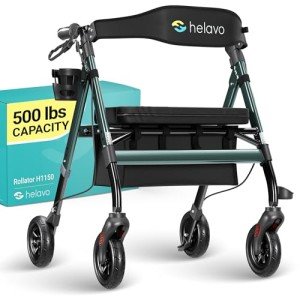Easy-To-Use Walker Tools To Help You Manage Your Daily Life Easy-To-Use Walker Trick Every Individual Should Know
The Ultimate Guide to Easy-To-Use Walkers: Empowering Mobility for All
Mobility is a fundamental element of everyday living, and for many individuals, especially the elderly and those with mobility challenges, walkers can substantially boost independence and safety. An easy-to-use walker can be the distinction in between relying on assistance and restoring autonomy. This blog post aims to explore numerous types of walkers, their features, and how people can choose the right walker according to their needs.
Comprehending Walkers: Types and Features
Walkers can be found in several designs tailored to particular needs, levels of mobility, and individual choices. The following table summarizes the most common kinds of walkers, their features, and possible benefits.
Walker Type
Description
Benefits
Standard Walker
A lightweight, fundamental frame with four legs.
Deals stability and support; easy to maneuver.
Two-Wheeled Walker
Features two wheels at the front for easy mobility.
Offers support while permitting smoother motion.
Four-Wheeled Walker
Likewise understood as a rollator, it has four wheels.
Enables for higher mobility and consists of a seat for resting.
Knee Walker
Created for people with foot or ankle injuries.
Makes it possible for users to rest weight on the knee while sliding with the other leg.
Chair Walker
Combines a walker with a seat and storage.
Offers convenience for longer ranges; excellent for resting.
Foldable Walker
Can be folded for easy transport and storage.
Mobility makes it perfect for travel.
Factors to Consider When Choosing a Walker
Selecting the best walker is crucial for guaranteeing security and comfort. Below are crucial aspects to think about:
Mobility Level: Assess the user's present mobility and balance. Helavo Rollator Walkers who need optimum stability might gain from a standard walker, while more mobile users may prefer a rollator.
Weight Capacity: Walkers are designed with particular weight limits. Always inspect the manufacturer's guidelines to make sure security.
Height Adjustment: An effectively fitted walker is important for comfort. Search for adjustable height alternatives to ensure it suits the user's stature.
Surface Type: Consider where the walker will primarily be utilized. Some walkers are much better suited for outdoor use, while others might operate best on carpets or inside.
Storage Needs: If the user typically brings individual items, walkers with baskets or trays may be useful.
Additional Features to Look For
Walkers have actually developed to include numerous features targeted at improving user experience. Some noteworthy features consist of:
Hand Grips: Ergonomically created hand grips contribute to comfort and manage.
Brakes: For rollators, check for reliable brakes which supply included security when decreasing or stopping.
Weight: Lightweight products enhance maneuverability and ease of transport.
Seat and Backrest: For users who may need to rest, alternatives with seats and backrests supply much-needed support.
Accessories: Consider additional items like trays, baskets, or lights that can boost walker functionality.
The Benefits of Using a Walker
Choosing an easy-to-use walker can bring many advantages for users and caregivers alike:
Increased Independence: Walkers decrease dependence on others, empowering users in their day-to-day routines.
Improved Safety: They offer vital support and balance, reducing the danger of falls and associated injuries.
Enhanced Mobility: Walkers permit people to preserve mobility even with limited physical abilities.
Activity Encouragement: Using a walker can inspire users to participate in regular motion, promoting overall health.
Social Interaction: Increased mobility motivates users to take part in social activities, enhancing emotional wellness.
Frequently asked questions about Walkers
1. How do I know which walker is best for me?
Selecting the best walker includes assessing your mobility needs, weight capacity, and personal choices. Consulting with a health care professional can also supply important insights.
2. Are walkers covered by insurance coverage?
Numerous insurance plans, consisting of Medicare, will cover walkers if they are deemed medically needed. It's best to consult your prepare for specific protection information.
3. How can I maintain my walker?
Regular maintenance includes examining wheels and brakes for damage, cleaning up the frame, and examining rubber tips for wear.
4. Can I use a walker outdoors?
Yes, there specify walkers designed for outdoor usage, such as four-wheeled rollators, which provide higher stability on numerous surfaces.
5. What is the typical weight limitation for walkers?
Weight limits can differ extensively depending upon the design and maker. A lot of basic walkers support up to 300 pounds, however it's vital to check specific specs.
Conclusion: Choosing the Right Walker for Enhanced Mobility
An easy-to-use walker is more than just a tool; it represents self-reliance and self-respect for numerous users. Whether it's a lightweight basic walker, a feature-rich rollator, or a specialized knee walker, the alternatives are huge and diverse. By understanding the various types of walkers offered, considering essential features, and recognizing the significant advantages they provide, people can make informed choices that line up with their needs.
Keep in mind, while this guide functions as a foundational resource, it is always advisable to talk to a healthcare specialist for tailored suggestions. By picking the right walker, individuals can actively participate in life, maintain their mobility, and pursue their passions without limitation.
